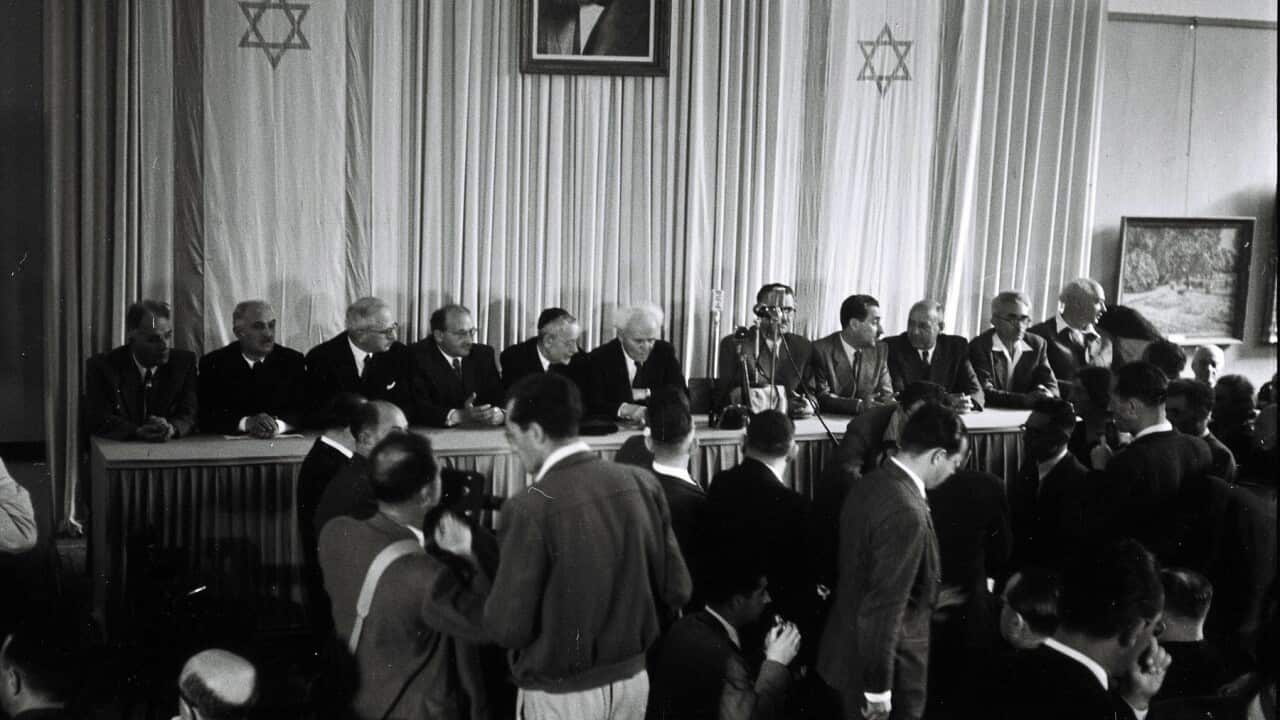The Women's World Cup may be coming to an end, but A-League and Matildas stars have made one thing clear - it's only the beginning for women's football.
This year's A-League season will begin before the men's league for the first time ever - in an effort to cash in on momentum built during the Women's World Cup.
Emily Gielnik has played for the Matildas more than 50 times.
She says the A-League is a platform for Matildas stars.
"For me I was a bit of a late bloomer I didn't start till I was 12 and work my way up to eventually get a Brisbane Roar contract and you know the likes of Katrina Gorry, Tameka Yallop just to name a few all were in that raw season where we developed in this A league and were able to develop enough to get contracts abroad so that was kind of a stepping stone for us and credit to the A-league. This was the platform to what gave us the confidence and the skills to be able to get big time contracts overseas."
The A-League women's competition is home to a host of international stars, including two Matildas World Cup stars, in defender Clare Hunt, and penalty shootout hero Cortnee Vine.
This year will be the longest-ever A-League women's season with 22 games and three new teams added, including the Central Coast Mariners.
The Mariners had competed in the competition previously, but pulled out due to a lack of funding.
Chloe Logarzo plays for Western United in the A-League women's.
She has nearly 50 Matildas appearances.
She is emphasising the importance of supporting the A-League off the back of the Women’s World Cup.
"If we're going to do it, it's going to be right now you could see there was 75,700 people in one stadium and then millions on top of that who are watching these games throughout this FIFA Women's World Cup. And for me personally, if we can do this and turn up for the Matilda's, why can't we do it for the A League? Because every single Matilda that was out on that field was a product of this A-league. If we want to continue the growth of this game and we want to make the Matilda's the best that they could possibly be. We want to have the investment into this A-league because the younger generation they're the ones who are going to be the next Matildas"
Western United made the A-League Women's grand final in their inaugural season last campaign, but still attracted less than 1,000 fans to some games.
This year, the League is expected to break its record of around 9,000 for its program of free passes for under 16s - with around 7,000 people already signed up.
Sydney FC women’s membership drive is already 40 per cent higher than its previous best, and still has two months to go before the season.
Although players have welcomed the increased support for women's football driven by the World Cup, they say it doesn't take away from remaining issues.
Elise Kellond-Knight is has played for the Matildas more than 100 time, and has more than 80 A-League appearances.
The Melbourne Victory midfielder is calling for more investment in women’s football so it can become a full-time job for players.
"We're not all full timers for 12 months, we need to be on full time 12 month contracts where we have access to staff 24/7. I've had a really unique scenario in that Victory have given me access to do my rehab full time with staff and at most other clubs that wouldn't happen like end of the season, then you're off and a lot of the players go and play in the N-P-L (National Premier League, which is a state-based second-tier league). How do we get the girls together 12 months a year with full time staff that are paid adequately to then create a great product that can replicate what we've just experienced at the World Cup."
But staffing and player's salaries aren't the only issues facing women's football.
Kellond-Knight says more government investment is crucial to invest in proper facilities.
"The facilities are not there. I'll be frank. So I don't know where that comes from government would be great to build more purpose built facilities. I think, in this World Cup, it's been interesting to be in oval stadiums. It's never ideal a rectangle game. So I think having better rectangular facilities would be great. And then also like for me, AAMI (Park in Melbourne) is perfect. Like it's a great capacity stadium that you get to feel the atmosphere. We don't need big 50,000 stadiums for our game yet. I hope that it gets there but having these boutique type stadiums is probably where we can see our game in the short term."
The Australian Professional Leagues is pushing for $12 million in government funding - to expand the women's A-League, sign Matildas marquee players, boost broadcast deals and put on major events.
There is also a push for a professional development fund and creating pathways for female coaches, along with greater engagement with community football.
Chloe Logarzo says this upcoming season is the perfect time to change how the league is viewed and invested in - to be more in line with the men's league.
"I'd like to take out the women's part and just have the football part because I think the biggest thing that I've taken away from this world cup is that we have just affected the whole entire nation. And that's pretty incredible to be able to take out the gender part of this role and just appreciate the sport. I think that speaks volumes on what this tournament has done for our nation. And for me, it's incredible. And this is why I hope that we capitalise on the back of this World Cup, especially in this A-league season because one, this is the first full time season - it's the 16th season and this is the first time we're having two full rounds to make it, I always joke about it, but to make it fair."













